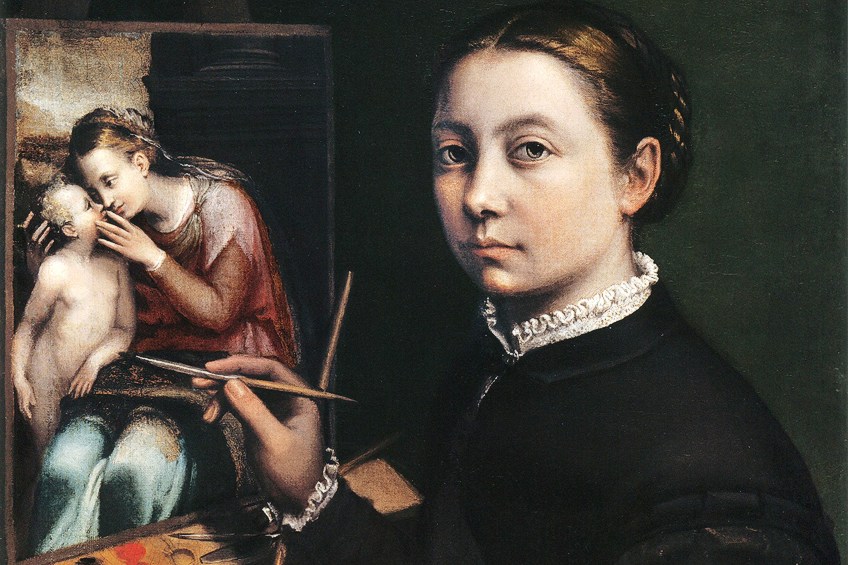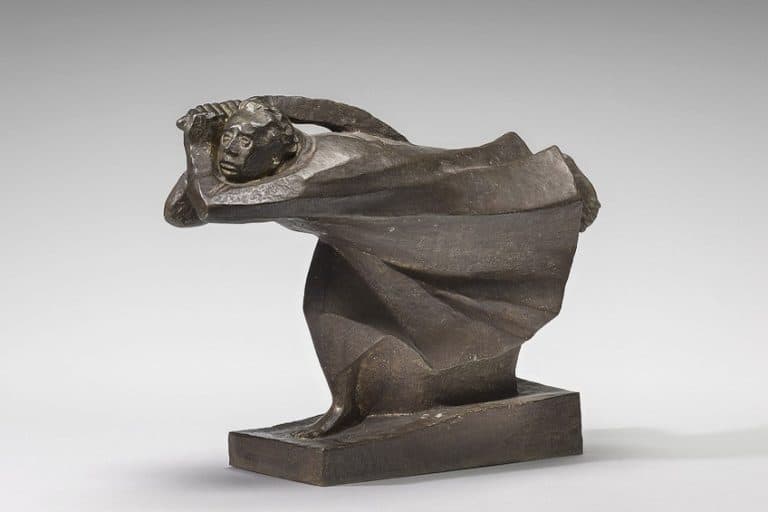Female Renaissance Artists – The Forgotten Women in Renaissance Art
The Renaissance exists as the most important period of art that has ever occurred. However, yet sadly unsurprisingly, the movement was dominated by male artists as female artists were not seen as capable enough of producing worthy art at that point. While we may be able to easily identify a male Renaissance artist, as their names have become ingrained in both art and world history, Renaissance women are scarcely spoken about. Below, we will be looking at some famous Renaissance women painting pieces and the iconic artists who created them.
Women in Renaissance Art
When people think of the Renaissance period, they are more than likely thinking about the artworks of Michelangelo, Leonardo da Vinci, Raphael, and Donatello, among others. During this period in history, men dominated both the art and academic scenes, which meant that female artists and thinkers were seldom affiliated with the greats of the time period.
This limited women in terms of their opportunities, as the only times that they ever surfaced in the art world was as a subject within an artwork or a character in literature.
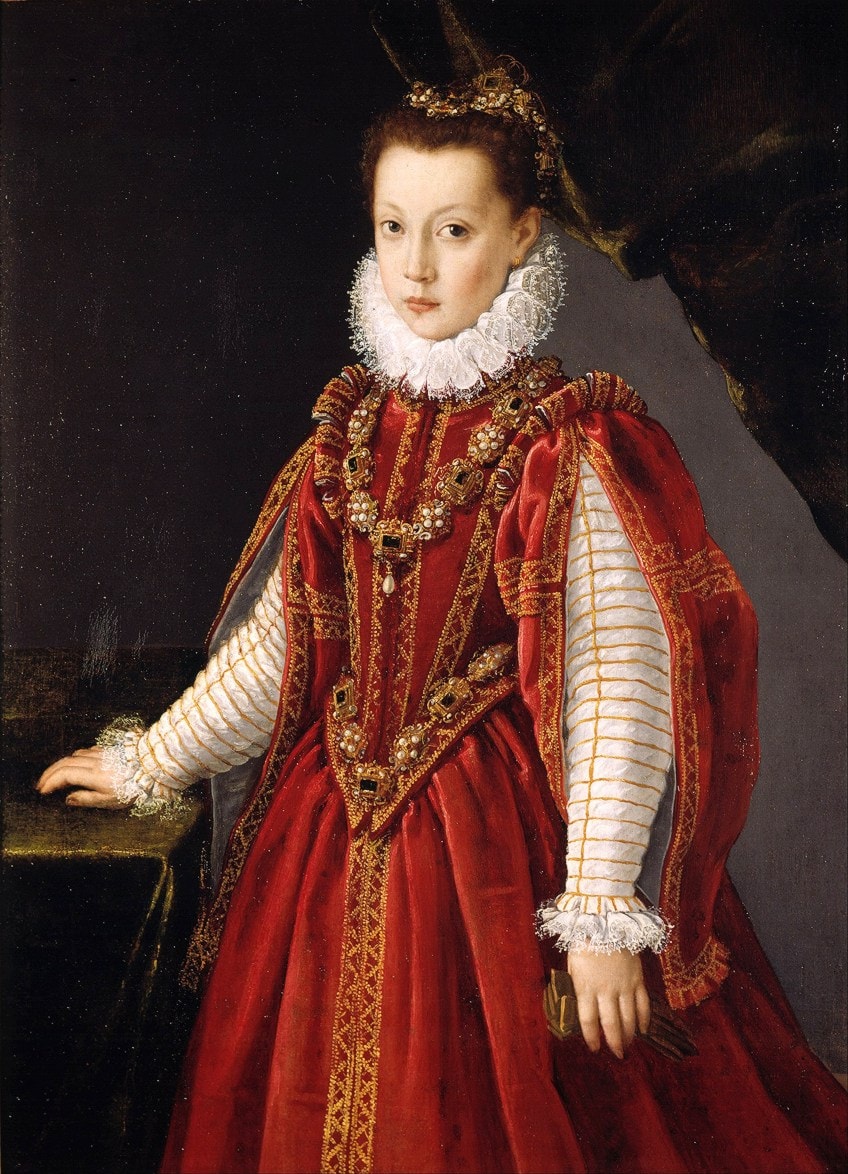
Renaissance art represented culture and was thought to exist as accurate portrayals of reality at the time. However, they actually demonstrated the restrictions that women had to face during the Renaissance, as their appearances were often changed and manipulated according to how artists saw fit. For three centuries, women who exhibited extraordinary artistic talent were not allowed to enter academies with their works, no matter how magnificent they were.
This meant that the names of these few female artists have mostly faded away with time.
In Renaissance Italy, most upper-class women had only two options for their lives: they were either expected to get married or join the convent. As you can imagine, this was not a very nurturing and encouraging environment for female artists to come forth and flourish. In reality, it was very challenging for women to even become artists, let alone successful ones. Unlike men, women were not able to receive any proper art training from the start of their careers, which made it very difficult for these artists to learn and improve upon their skills.

The women who did enter into the art world were either self-educated or trained by their fathers who were also artists. Despite this form of training, these women and their artworks were largely neglected in the conventional art world, as the ability to use and wield a painter’s brush was considered to be something more appropriate for men.
However, several notable Renaissance women were not bothered by this belief and passionately fought back to help younger generations of female artists to advance within the art sphere.
Due to these challenges, female Renaissance artists were, unsurprisingly, scarce at certain points during the Renaissance. While women were given very limited opportunities to create art at all, celebrated male artists were labeled as “virtuoso”, which translated to “mortal god”. Nevertheless, Renaissance women fought back tirelessly to be seen as equal in the art world. Some women managed to become distinguished and even dominant artists, as they seemed to conquer the social and cultural restrictions of their time.
Our Top 10 Female Renaissance Artists
The legacies left by remarkable female Renaissance artists completely shifted the course of development for other female artists who emerged centuries later. Renaissance women defied the restrictions that were given to them based on their gender and taught generations of rising artists to reject any men who would try to hinder their advancement in the art world.
Today, these women are finally being recognized for their contribution to art through long-overdue exhibitions. Below, we will be taking a look at several notable women in Renaissance art.
Levina Teerlinc (1510 – 1576)
| Nationality | Flemish |
| Where the Artist Lived | Belgium and England |
| Associated Art Movements | Renaissance |
| Most Famous Paintings | Portrait of Lady Katherine Grey (c. 1555 -1560) Queen Elizabeth and the Ambassadors (c. 1560) Portrait of a Young Woman (1566) |
Daughter of renowned miniaturist artist Simon Bening, Flemish artist Levina Teerlinc is first on our list of most noteworthy female Renaissance artists. Teerlinc went on to become a prominent miniaturist in her own right and worked as the royal painter for the English Tudor court of Henry VIII, Edward VI, Mary I, and Elizabeth I.
There, Teerlinc was considered to be the most significant miniaturist of her time and was ranked between the well-known Hans Holbein the Younger and Nicholas Hilliard.
Her father trained her as a manuscript painter, and it was speculated that she worked in his workshop before getting married. As a result of her father’s teachings, Teerlinc conquered a very unique facet of Flemish Renaissance portraiture.
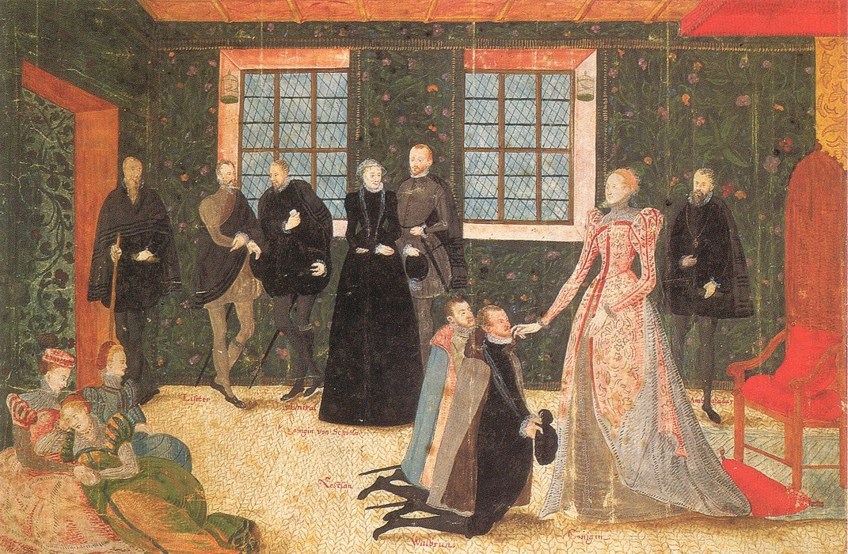
She became a truly prolific miniaturist, with her methodically designed portraits and pictures of 16th-century life catching the interest of King Henry VIII, where she became the only female painter in the court. She was invited to England and reportedly received a higher salary than her predecessor, Hans Holbein.
Teerlinc’s position in the court allowed her to modernize the method of miniature painting by adding writing to her works.
No existing artworks have been accurately confirmed as Teerlinc’s, due to her propensity to rarely sign her paintings. However, the few works that she did sign have been identified as hers, as well as several others based on the fact that she was the only active miniaturist of importance in the English court. Despite this uncertainty, Teerlinc remains one of the most chronicled artists at court in miniature painting.
Plautilla Nelli (1524 – 1588)
| Nationality | Italian |
| Where the Artist Lived | Florence |
| Associated Art Movements | Renaissance |
| Most Famous Paintings | The Last Supper (c. 1568) Lamentation with Saints (c. 1569) Saint Dominic Receives the Rosary (unknown) |
Italian nun Plautilla Nelli was among the first women artists in Florence to produce female Renaissance paintings. As a nun of the Dominican convent of St. Catherine of Siena, which was located in Piazza San Marco in Florence, Nelli was greatly impacted by the doctrines of Savonarola and the artworks of Fra Bartolomeo.
This led to her becoming a self-taught artist, where she looked to the works of other mannerists and High Renaissance painters for inspiration. However, her main source of inspiration remained the paintings of Bartolomeo.

Despite her father being a painter, Nelli was thought to have educated herself on certain aspects of art before entering the convent at the age of 14. Nelli spent the rest of her life here, where she slowly ascended to become prioress, the head of a house of nuns, in 1568. When Bartolomeo passed away, his paintings were passed on to “a nun who paints” in the convent, which was widely suspected to be Nelli.
When looking at her Renaissance woman painting pieces, Nelli also focused mainly on religious themes.

Her artworks were easily distinguishable from that of her influencers, as Nelli openly depicted her characters’ expressions with elevated feelings and strong emotions. Due to her calling as a nun, Nelli was forbidden to study the nude male form and was said to include feminine characteristics for her male characters.
Unlike other female artists at the time, Nelli boldly signed her paintings as “Pray for the Paintress” after her name, which confirmed her role as the artist despite her gender.
Catharina van Hemessen (1528 – 1588)
| Nationality | Flemish |
| Where the Artist Lived | Belgium and Spain |
| Associated Art Movements | Renaissance |
| Most Famous Paintings | Self-Portrait (1548) The Lamentation of Christ (c. 1550) Portrait of a Woman (1551) |
Another important artist on the list of Renaissance women paintings that were created is Flemish painter Catharina van Hemessen. Celebrated today for being a distinguished Renaissance woman portrait painter, van Hemessen was regarded as the first female Flemish artist for whom surviving artworks have been positively identified as being produced by her.
Creating portraits between the late 1540s and early 1550s, van Hemessen was best known for a series of small-scale paintings, as well as several other religious compositions.

In addition to being the first female Flemish artist whose artworks were found, van Hemessen was also credited as the first artist to create the iconic style of self-portraiture through the works she produced. As the daughter of a famous Mannerist painter, van Hemessen was taught by her father and was said to have collaborated together on many of his artworks.
Despite the Renaissance being unwelcoming of female artists, she enjoyed an incredibly long career and was thought of as a very successful painter during her lifetime.
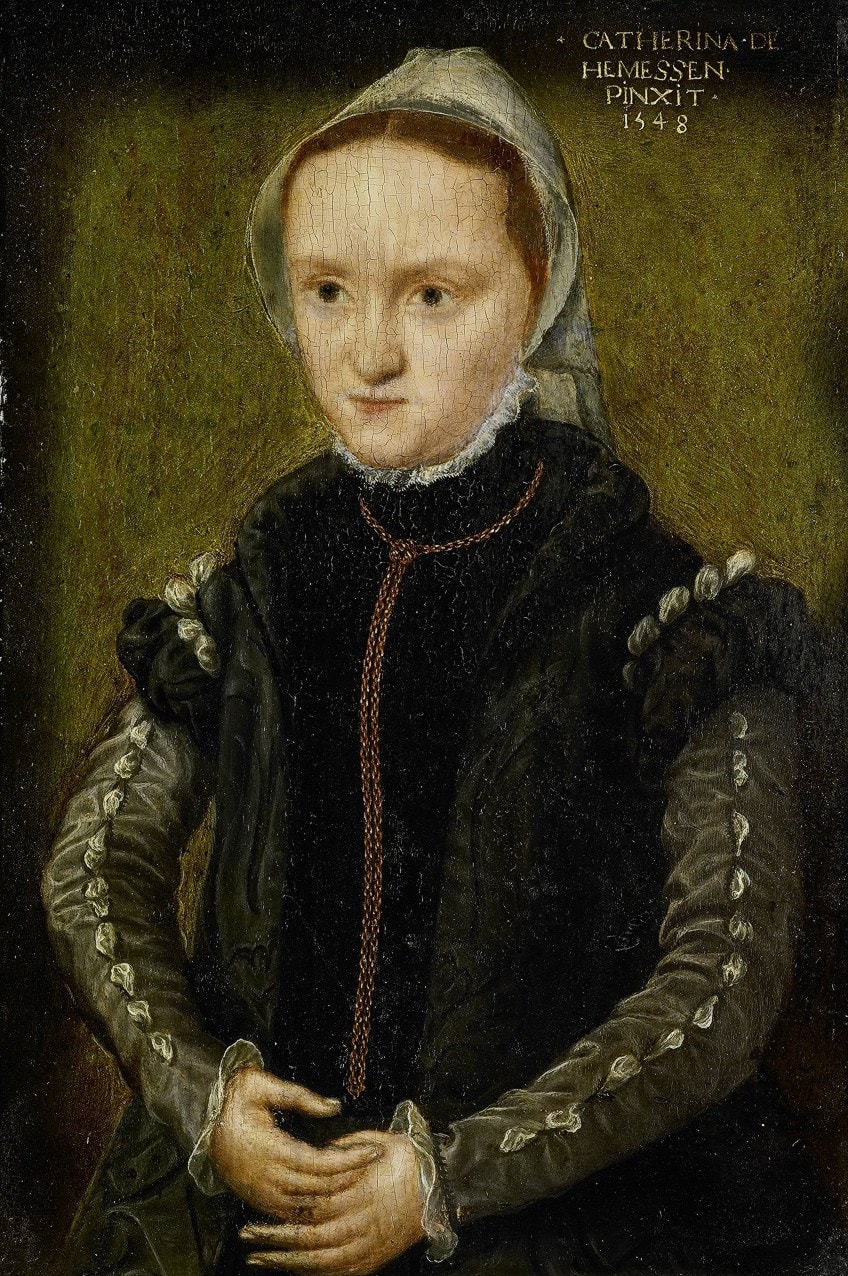
When viewing van Hemessen’s surviving artworks, simple clothing, serious expressions, and dark backgrounds were typical features in her Renaissance portraits. While these qualities did not depict her models in a necessarily complementary light, they did help in making her a prolific portrait painter for her time.
While she tended to mainly portray affluent men and women in her works, she painted them in such a delicate way that she was able to saturate her subjects with a certain refined charm that they did not otherwise possess.
Sofonisba Anguissola (1532 – 1625)
| Nationality | Italian |
| Where the Artist Lived | Italy |
| Associated Art Movements | Renaissance |
| Most Famous Paintings | Self-Portrait with Bernardino Campi (1550) Self-Portrait at the Easel (1556) Portrait of Bianca Ponzoni Anguissola (1557) |
Italian painter Sofonisba Anguissola is widely regarded by art historians as the first major female artist of the Renaissance. As one of the few women in Renaissance art to receive international acknowledgment for her contribution to art, Anguissola’s body of work had a lasting effect on subsequent generations of emerging female artists.
Her artworks even earned her some praise from the great Michelangelo, with Anguissola’s career eventually leading her to the Spanish Court to paint royal portraits of King Philip II and his family.

As a late Italian Renaissance painter, Anguissola was best known for the portraiture that she produced. Her father made the unprecedented decision to have her trained as a painter outside of the house, where she developed into a distinguished artist. She was fortunate to receive a well-rounded education of fine arts taught by Bernardino Campi, which few other women of her time had access to.
After training, she apprenticed with several local painters, which established a precedent for all women to be viewed as capable and accepted as students of art.
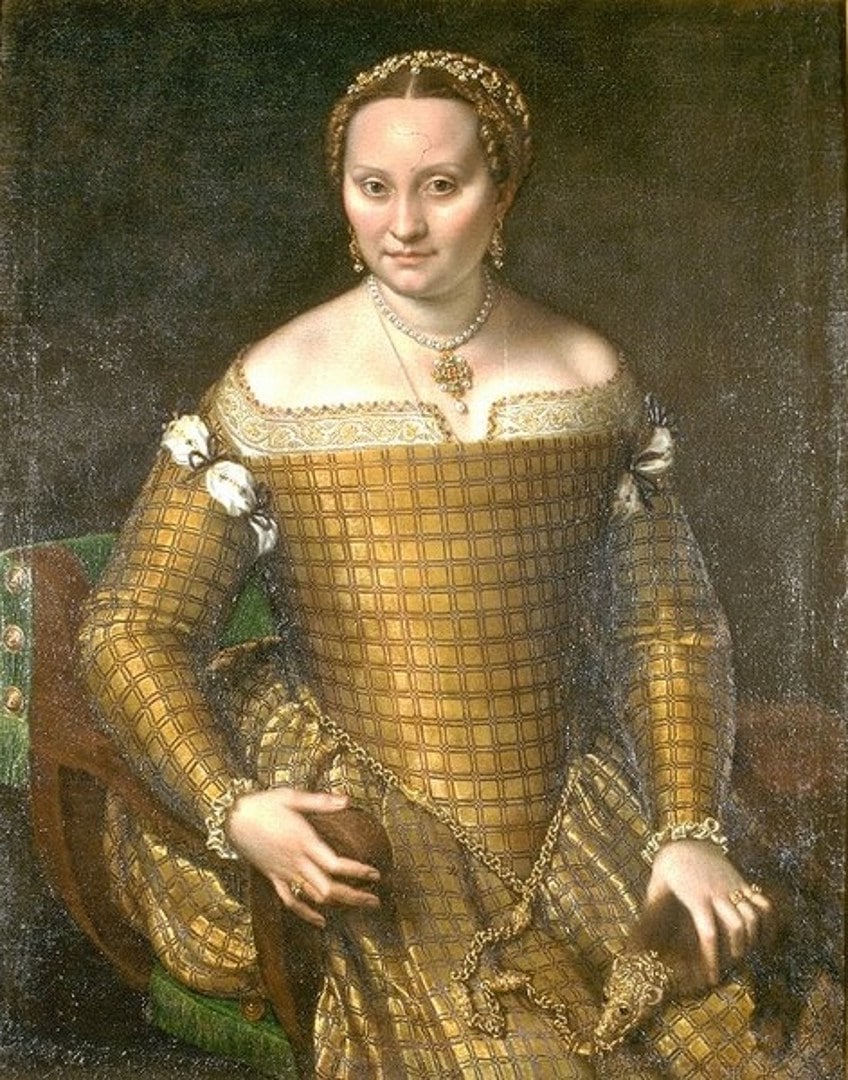
The technically sophisticated paintings that Anguissola created did more than just push the limits within the category of portraiture. Her artworks viciously criticized the Renaissance conventions of viewing women as mere objects. This can be seen in her Self-Portrait with Bernardino Campi, where she mocks tradition by portraying her master as painting the embellished details of her dress, which was an activity usually assigned to apprentices.
Today, this specific painting exists as a 500-year-old dismissal of patriarchal control.
Lavinia Fontana (1552 – 1614)
| Nationality | Italian |
| Where the Artist Lived | Italy |
| Associated Art Movements | Renaissance |
| Most Famous Paintings | Portrait of the Maselli Family (c. 1565 – 1614) Self-Portrait at the Virginal with a Servant (1577) Portrait of a Noblewoman (c. 1580) |
Another important artist who created notable Renaissance women paintings was Italian artist Lavinia Fontana. Known to be quite strong-willed, Fontana trained as a Mannerist painter and achieved fame in developing portraiture techniques by skillfully including symbolic still life objects into her compositions. Regarded as one of the first celebrated artists within the group of Renaissance women, Fontana also became the first female to openly paint female nudes.
Her subject matter typically revolved around portraiture, mythology, and religious paintings.
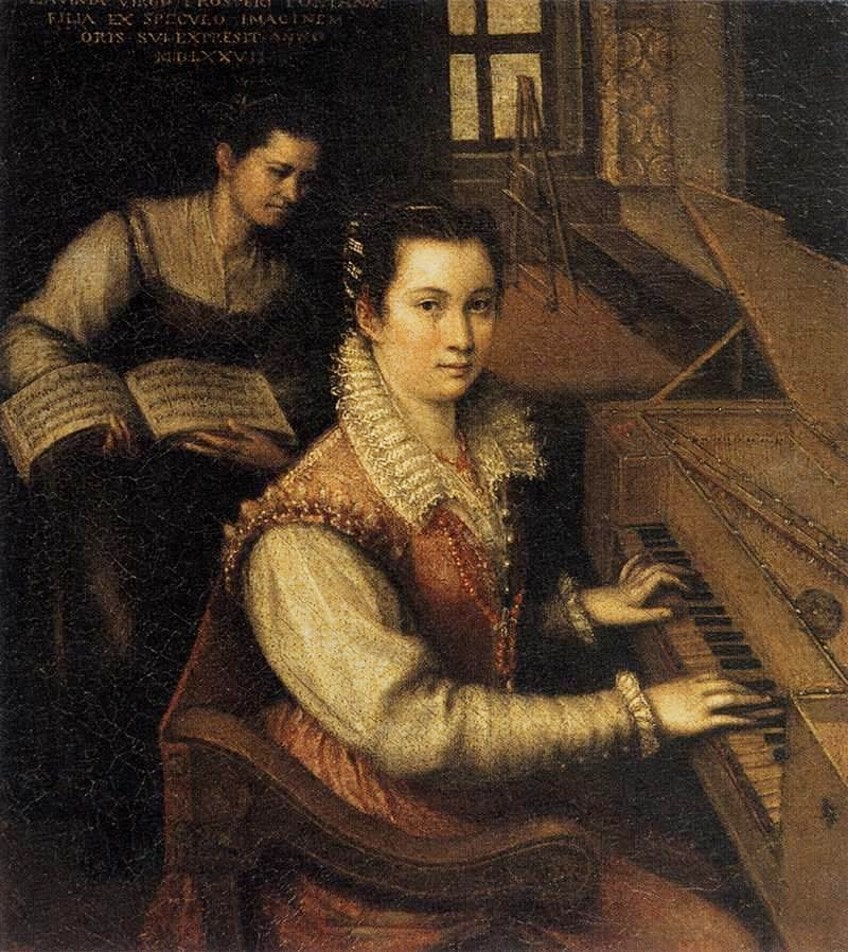
As the daughter of the distinguished artist Prospero Fontana, she was able to make considerable steps in the field of portraiture after being trained by her father. This led to her becoming well-known throughout Italy and beyond, with Fontana becoming the first female career artist in Western Europe who solely depended on commissions for her income.
Her family also financially relied on her career as a painter, with her husband assuming the then-controversial role of staying at home to raise their children as well as working as her agent.

Fontana’s successful career as a female artist within the Renaissance was impressive, as her ability to support her entire family on the salary she earned as a painter was incredibly rare at the time. After moving from Bologna to Rome to further her career, she became a portraitist at the court of Pope Paul V, who greatly admired her style. This contract helped expand her already considerable artistic talents, with it also giving spectators an insight into her scholarly and exclusive way of living through the self-portraits that she produced during the same time.
Fede Galizia (1578 – 1630)
| Nationality | Italian |
| Where the Artist Lived | Italy |
| Associated Art Movements | Renaissance |
| Most Famous Paintings | Portrait of Paolo Morigia (1592 – 1596) Judith with the Head of Holofernes (1596) Glass tazza with peaches, Jasmine flowers, quinces and a grasshopper (c. 1610) |
An Italian painter best known for her still lifes was Fede Galizia, who went on to become a great pioneer within this genre. While she occasionally painted portraits, religious images, miniatures, and altarpieces, Galizia was especially noted for the skills she displayed when creating still lifes. Because of this, she became known as one of the earliest practitioners in European still life art that focused specifically on fruits.
However, she was not as popular as other female artists of her time and did not achieve the patronage of any rulers or noblemen.

As the daughter of a miniaturist and portrait painter, Galizia developed her love of art from her father who taught her how to paint. By the age of 12, she was so proficiently skilled as an artist that she was referred to by Gian Paolo Lomazzo, a friend of her father, who was a notable painter and art theorist at the time. As she displayed such a high level of skill at such a young age, Galizia established herself as a competent artist by her late teens and began to build an impressive international reputation for herself.
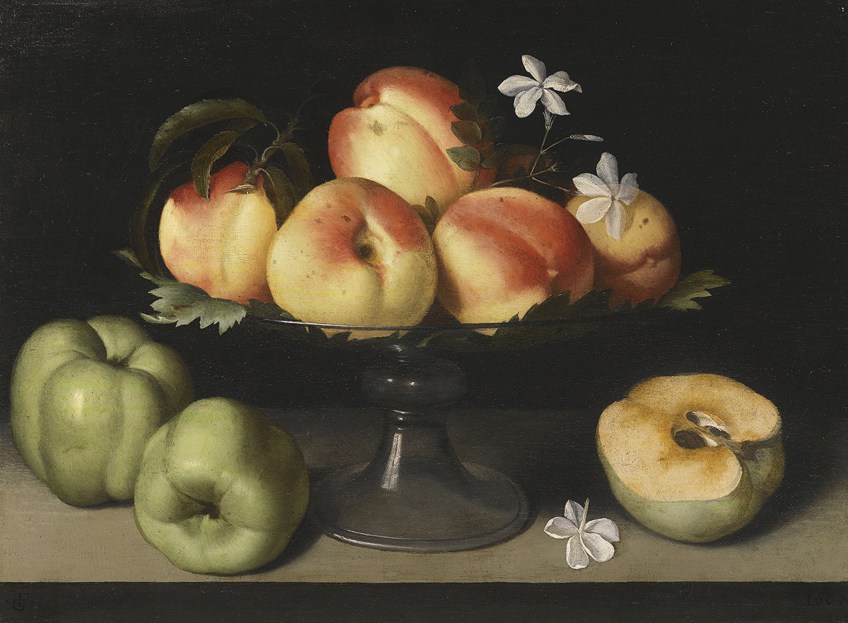
While she was often commissioned to paint portraits and religious images, she was best known for her flawless still lifes. Making use of great detail and vibrant colors, Galizia frequently filled her still life paintings with a variety of fruits and flowers that displayed varying levels of light and darkness.
Unlike her fellow artists at the time, who painted in a very extravagant and exaggerated style, Galizia chose to use a more precise and simplified style within her artworks.
Clara Peeters (1589 – 1657)
| Nationality | Belgian |
| Where the Artist Lived | Belgium and the Netherlands |
| Associated Art Movements | Renaissance and Baroque |
| Most Famous Paintings | Still Life with Flowers, Goblet, Dried Fruit, and Pretzels (1611) Still Life with Cheese, Almonds, and Pretzels (c. 1615) Still Life of Fish and Cat (1620) |
Another painter who was well-known for her exquisite still lifes was Belgian painter Clara Peeters. Working in the Netherlands, Peeters was said to have contributed greatly to the Baroque movement that emerged after the Renaissance ended. Her paintings, which fell into both artistic genres, were meticulously created with the utmost realism.
Focusing specifically on still lifes as her preferred genre, Peeters created truly delectable compositions of food neatly spread out on platters and surrounded by fancy utensils and flowers.
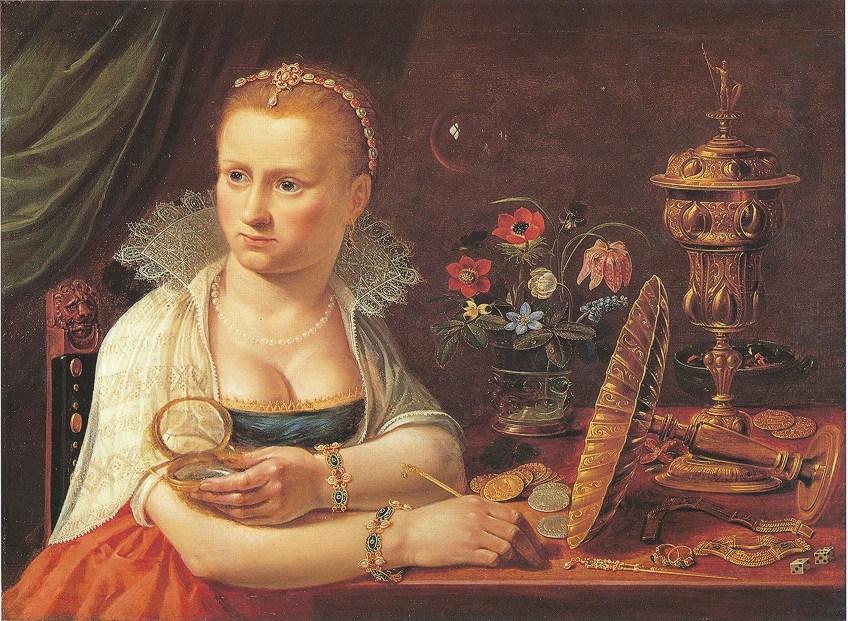
While she mainly painted still lifes, Peeters can also be labeled as something of a portraitist. This is because when looking closely at the pristine goblets and objects that she included in her works, she went on to include tiny reflections of herself in the process of painting the work. These miniature self-portraits were seen as the true stars of her artworks, as they demonstrated the true skill that Peeters possessed.
As a female artist, her subtle inclusion of portraits was thought to cement her legacy as a painter who demanded to be recognized.

Artemisia Gentileschi (1593 – 1653)
| Nationality | Italian |
| Where the Artist Lived | Italy |
| Associated Art Movements | Renaissance and Baroque |
| Most Famous Paintings | Judith and Holofernes (c. 1620) Mary Magdalene as Melancholy (1622 – 1625) Self-Portrait (1638 – 1639) |
Perhaps the most iconic female artist to emerge from the Renaissance, as well as one of the most distinguished artists in history, was Italian painter Artemisia Gentileschi. Renowned for creating striking Renaissance paintings of women, Gentileschi is considered amongst the most accomplished 17th-century artists in the generation that followed Caravaggio, with her artistic career already beginning at the early age of 15.
Born just before the Baroque era, she created dynamic and striking artworks that had never been painted by any woman before her.
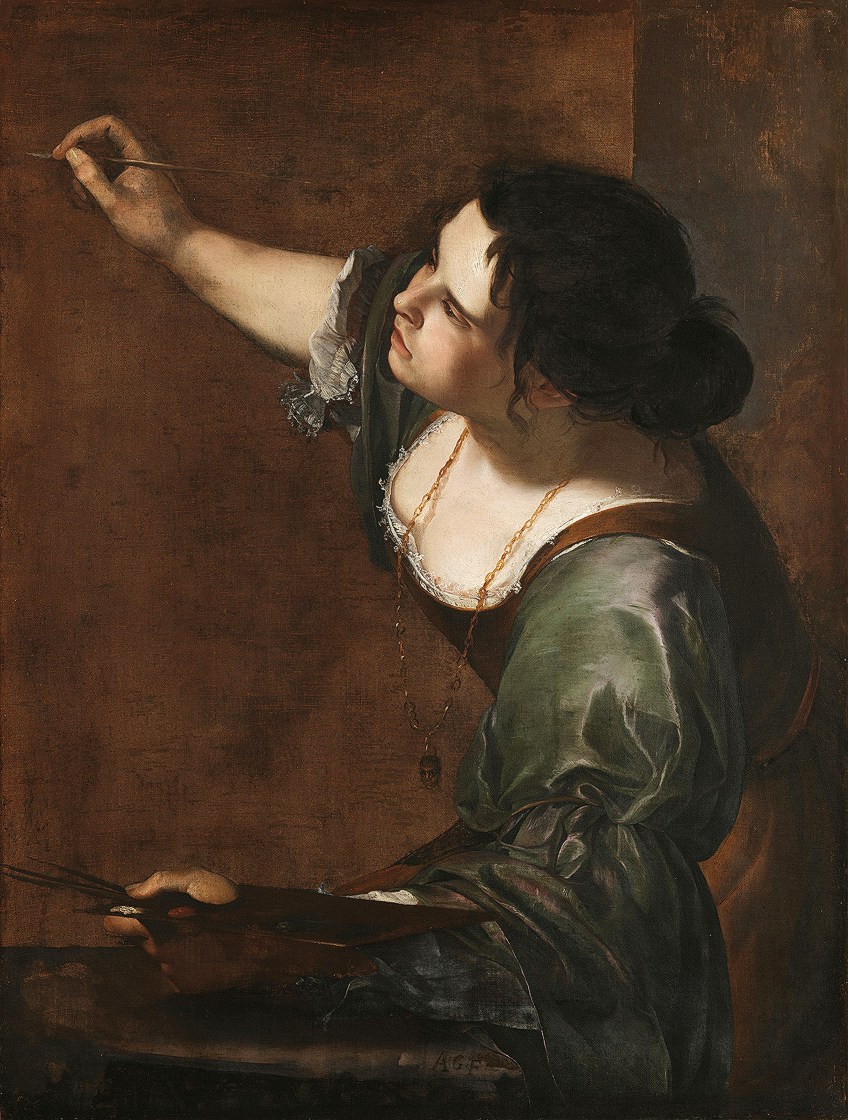
Working in her father’s art studio, Gentileschi showed much more eagerness and ability than her brothers in terms of her artistic skills. This led her father, the notable Orazio Gentileschi, to state that her gift for art was unmatched by any other artist at the time. Living in an era where women had limited chances for artistic training or being able to work as master artists, Gentileschi was the first woman to become a member of the prestigious Accademia di Arte del Disegno in Florence.
With a career that stretched over 40 years, Gentileschi’s artworks were always bold.

The majority of her paintings depicted both strong and suffering women from various myths, allegories, and the Bible. Many critics have attributed the brazen attitude within her artworks to the sexual assault that she suffered at 19 years old. Using paintbrushes and canvases, Gentileschi fearlessly fought back at the male brutality that controlled the world she lived in, which essentially made her the maker of her own image and the true hero of her own life.
Scholars argued that it was “difficult to believe” that Gentileschi was the painter behind such powerful works. She painted with an intellectual advancement that was almost unheard of then, proving that she was miles ahead of her male colleagues.
Not only did she become a successful artist in a time where academies denied access to women, but she also expressed a powerful vision that few other Renaissance artists were able to do. Accomplishing something so impossible, she is truly deserving of her title as one of the most famous artists ever.
Judith Leyster (1609 – 1660)
| Nationality | Dutch |
| Where the Artist Lived | The Netherlands |
| Associated Art Movements | Renaissance, Baroque, and Dutch Golden Age |
| Most Famous Paintings | Self-Portrait (1630) The Carousing Couple (1630) The Concert (c. 1633) |
Dutch painter Judith Leyster is another important Renaissance woman portrait painter, with her artworks establishing her as a prominent figure within the Dutch Golden Age era of art. Despite this, she was largely overlooked by art historians for centuries in comparison to other notable female artists at the time, yet a reason for this exclusion is not known. Leyster excelled in genre painting, with portraiture and still lifes encompassing her best artworks.
Viewed as an outstanding artist today, she is remembered for her lively and energetic scenes.

When viewing Leyster’s paintings, her flamboyant and somewhat gaudy brushstrokes generated a unique style that was far beyond her years and time. Choosing to depict mainly bright and cheerful scenes, most of Leyster’s compositions are made up of one or two figures engaged in fun and celebratory activities. She typically opted to paint musicians in the process of making music or dancing, paired with several still life objects.
This demonstrated her skill at merging genres and brought a jovial and playful element to her portraits.

Many painters were inspired by her extraordinary methods, as her incorporation of common objects hinted at the growing inclusion of modern motifs in artworks. Some painters were so amazed by her artworks that they attempted to pass them off as their own. A notable example of this occurred in 1892 when an artwork supposedly painted by Frans Hals was sold to the Louvre. Upon closer inspection, the initials “JL” were clearly seen.
Despite her evident status in the art world, her impact has been all but omitted from art history since she died.
Elisabetta Sirani (1638 – 1665)
| Nationality | Italian |
| Where the Artist Lived | Italy |
| Associated Art Movements | Renaissance and Baroque |
| Most Famous Paintings | Self-Portrait as an Allegory of Painting (1658) Self-Portrait (c. 1660) Virgin and Child (1663) |
The last prominent artist on our list of famous female Renaissance artists is Elisabetta Sirani, who had a tremendous impact on the art world. Her most notable contribution to the furthering of female Renaissance paintings was her work to establish the first-ever academy for fellow women artists in Bologna, Italy. Throughout her all-too-brief career, Sirani was recorded to have created over 200 paintings, drawings, and etchings.
At the age of 27, she died suddenly and mysteriously, with her maidservant being charged with poisoning her.
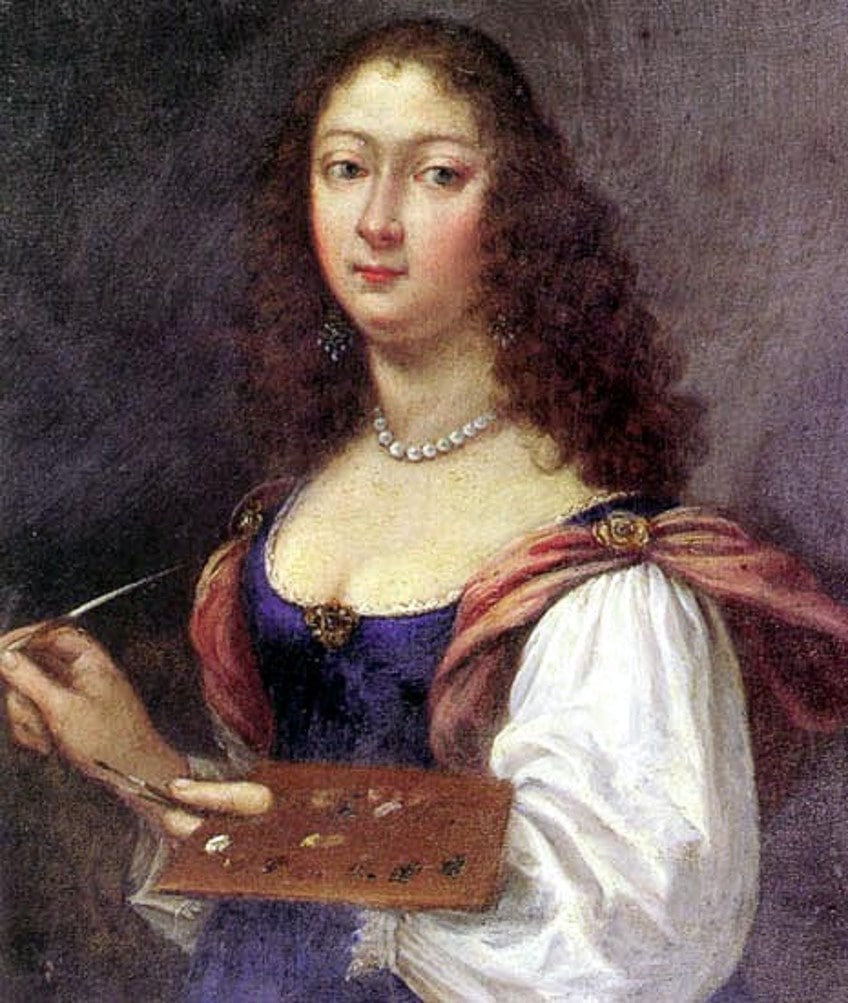
Born into an artistic family, Sirani was initially trained by her painter father in his studio. However, her talent quickly outshone both her father and two sisters, who were also painters, as Sirani’s skill began to exceed that of her teachers. Soon enough, Sirani began to earn very impressive commissions, which helped her to financially support her family from the age of 19.
Her most impressive patron was the Grand Duke Cosimo III de Medici, whose faith in her further emphasized her great talent in an era where women could not enter the art world.
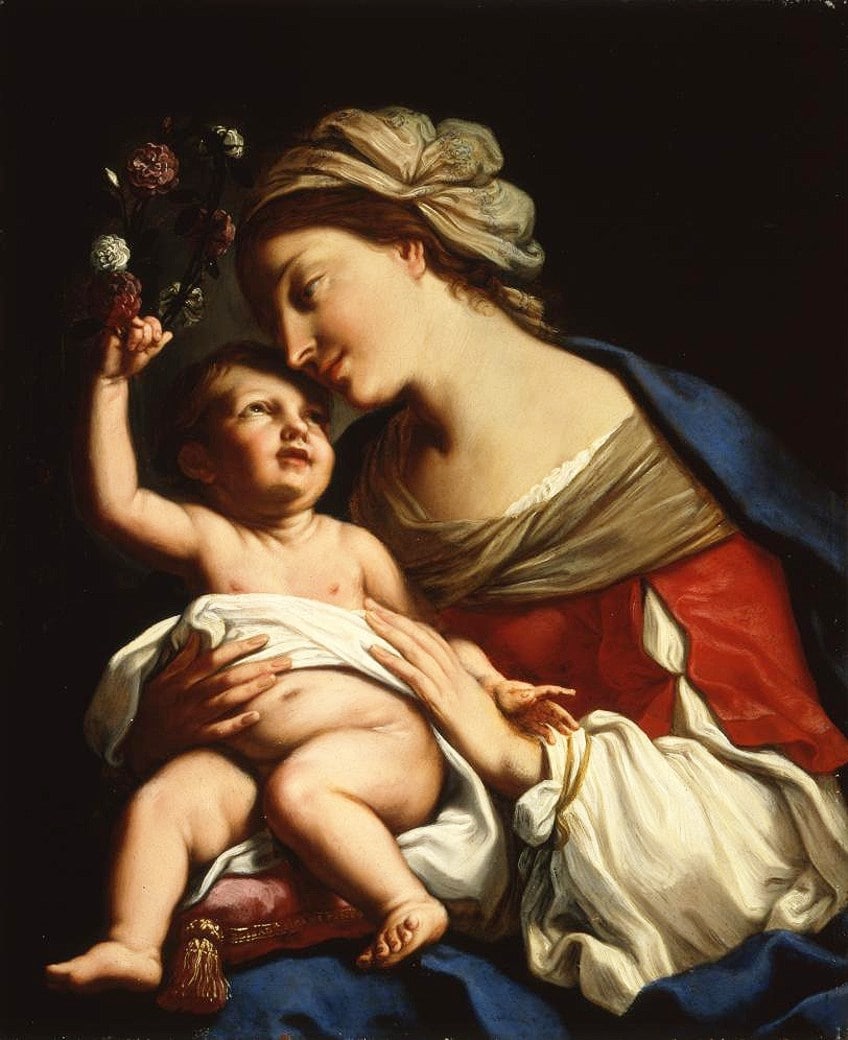
Sirani was known to paint magnificently and very rapidly, which attracted many visitors to her studio to watch her at work. Skeptics even visited the child prodigy in her studio to get visual confirmation that it was she and not her father who was producing these truly impressive altarpieces and artworks. Sirani chose to create impressive biblical and allegorical scenes that mainly featured women, with her use of chiaroscuro adding to the work’s intensity. This led to her receiving many backhanded compliments about her paintings.
The impact that women in Renaissance art had on the art world is plain to see. When looking at the artworks created by these iconic female Renaissance artists, they have proved to be incredibly influential and have gone on to influence future generations of celebrated female artists. While the inclusion of women in the academic art sphere proved to be a slow process, their powerful effect remains undeniable. If you have enjoyed reading up about these iconic artists, we encourage you to find out more about their artworks.
Take a look at our Renaissance women paintings webstory here!
Frequently Asked Questions
Is There Ongoing Research into Female Renaissance Artists?
In 2009, a nonprofit foundation was started in Florence, which investigated why women were left out of these important galleries and focused on locating their important artworks. Known as Advancing Women Artists (AWA), this group has begun the process of uncovering a forgotten and neglected part of the art world. Historians have worked to identify over 2000 artworks by women artists that have been gathering dust in Italy’s churches and public libraries instead of hanging proudly in its museums.
Were Any Parts of Italy More Accepting of Female Renaissance Artists?
Out of all the cities and towns in Italy, Bologna proved to be the only area that somewhat flourished with professional female painters during the Renaissance period. Out of the 300 active painters living in the city during the 1600s, about 25 of these artists were women, which was a major achievement for its time. In fact, Bologna boasted the largest grouping of professional female artists than in any other Italian city at the time and produced a significant number of Renaissance paintings of women.
Isabella studied at the University of Cape Town in South Africa and graduated with a Bachelor of Arts majoring in English Literature & Language and Psychology. Throughout her undergraduate years, she took Art History as an additional subject and absolutely loved it. Building on from her art history knowledge that began in high school, art has always been a particular area of fascination for her. From learning about artworks previously unknown to her, or sharpening her existing understanding of specific works, the ability to continue learning within this interesting sphere excites her greatly.
Her focal points of interest in art history encompass profiling specific artists and art movements, as it is these areas where she is able to really dig deep into the rich narrative of the art world. Additionally, she particularly enjoys exploring the different artistic styles of the 20th century, as well as the important impact that female artists have had on the development of art history.
Learn more about Isabella Meyer and the Art in Context Team.
Cite this Article
Isabella, Meyer, “Female Renaissance Artists – The Forgotten Women in Renaissance Art.” Art in Context. December 1, 2021. URL: https://artincontext.org/female-renaissance-artists/
Meyer, I. (2021, 1 December). Female Renaissance Artists – The Forgotten Women in Renaissance Art. Art in Context. https://artincontext.org/female-renaissance-artists/
Meyer, Isabella. “Female Renaissance Artists – The Forgotten Women in Renaissance Art.” Art in Context, December 1, 2021. https://artincontext.org/female-renaissance-artists/.


